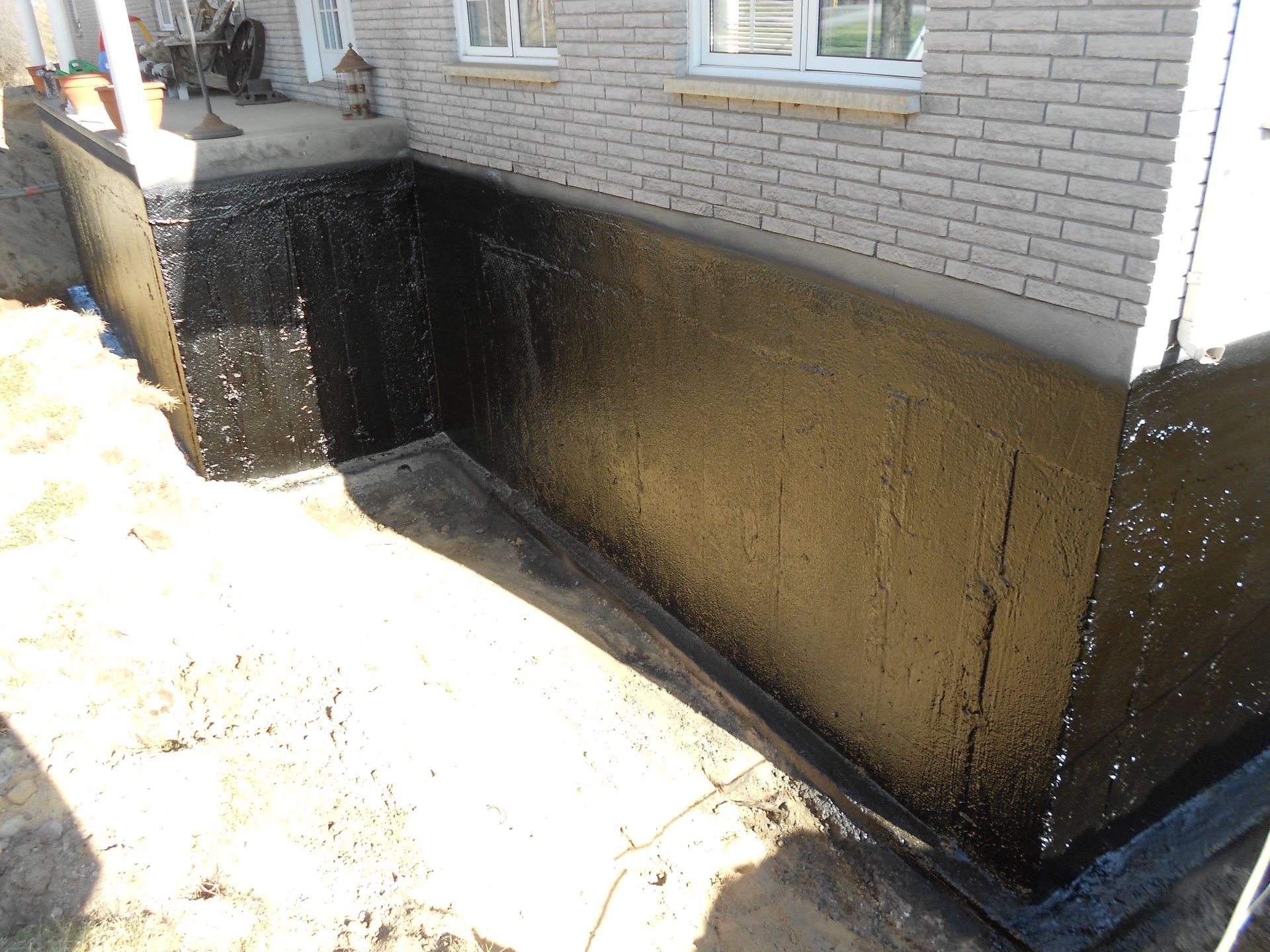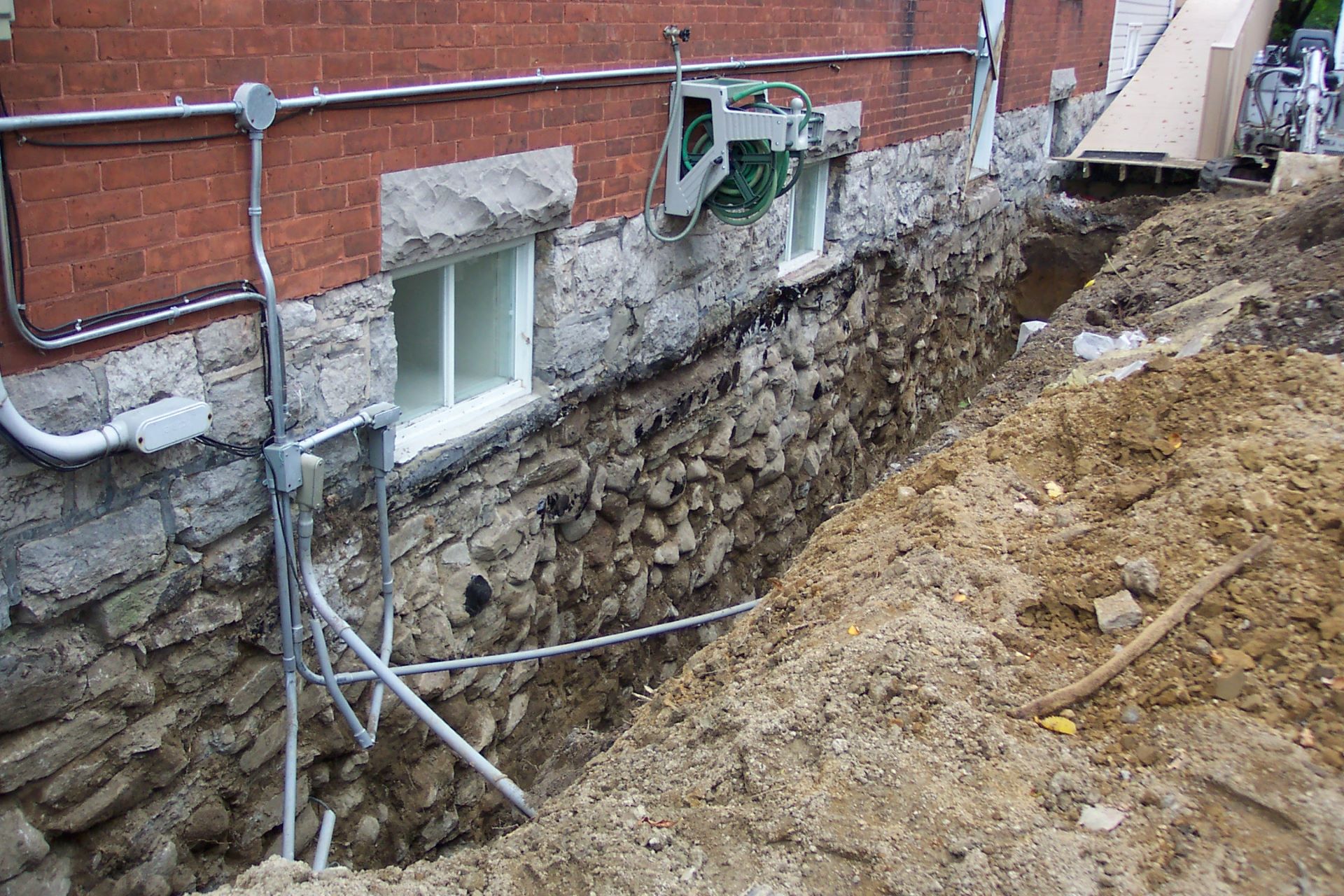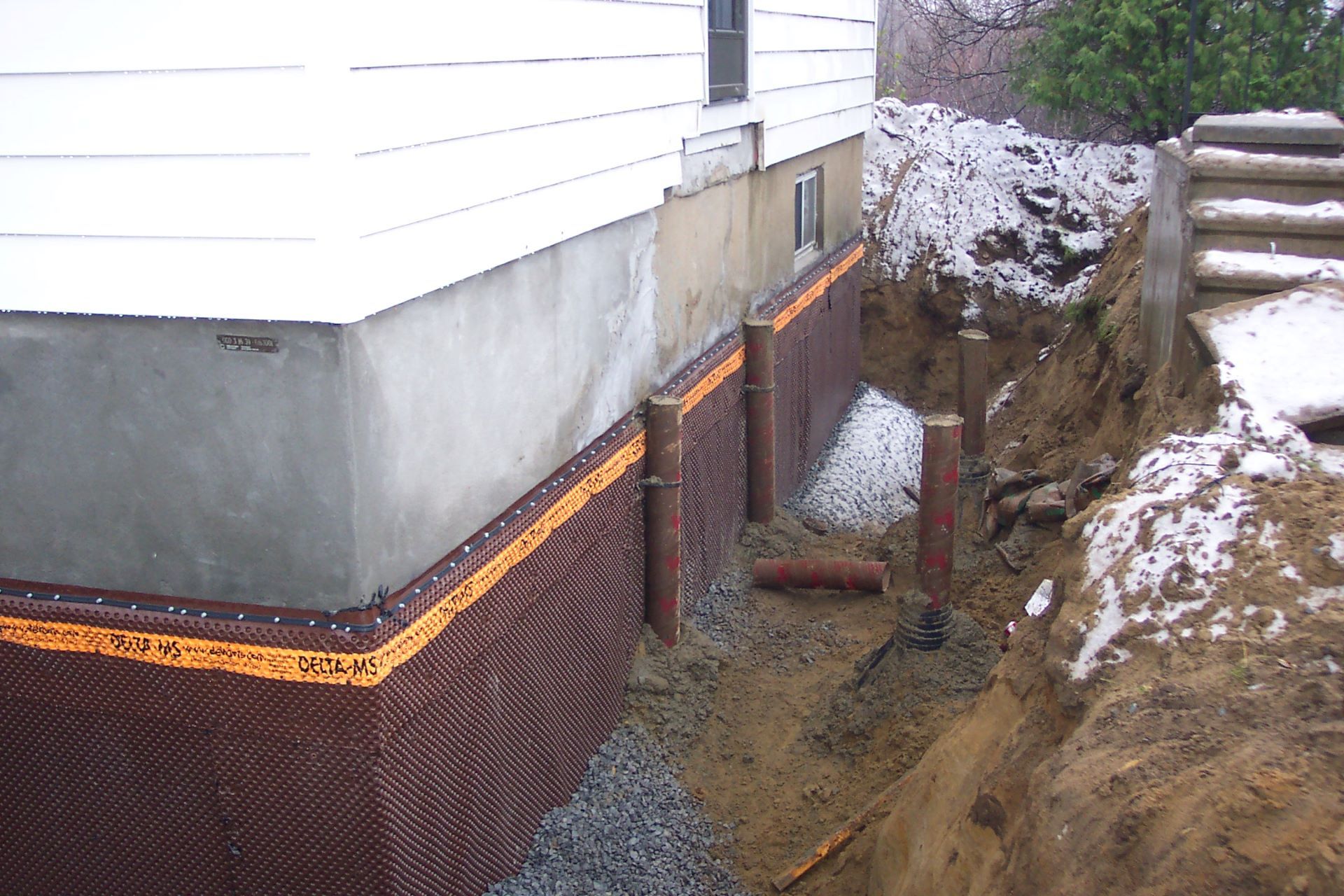Services
Foundation Restoration
We are here to provide you with the best solutions and a stress free process that resolves your interior and exterior basement issues.
Foundation Restoration in Ottawa & Surrounding Areas
MEMBRANIX Coatings Inc. are experts in Ottawa and surrounding areas for foundation repair and restoration. Our highly trained and dedicated personnel will evaluate the condition of your foundation, determine the cause and advise the best solution for you so you can have a dry and warm basement.
Reach out to MEMBRANIX Coatings Inc. for a foundation repair or restoration consultation. We provide efficient services that are long-lasting.
There are various causes of water penetration, an example would be in the corner of a window. This is where small hairline cracks appear, allowing water seepage which generally can be injected from either the interior or exterior with polyurethane, or an above grade crack repair in the parging area. In other cases, there can be more significant factors involved, such as structural cracks, mortar on block walls deteriorating, walls buckling or heaving, weeping tile not functioning, which can also cause water to seep in at the floor level of your basement.


Foundation Restoration
The general signs of water problems in your basement are:
- Dampness at the base of the foundation wall
- Wall or drywall staining
- Discoloration
- Carpet (flooring) is wet
- Water stain, mildew or a musty smell on objects stored on the floor
- Efflorescence (white powdery substance)
- Condensation on the windows and concrete
A Typical Exterior Foundation Repair Consists Of:
- Obtaining all appropriate locates for the premises
- Excavating the foundation wall down past the footing
- Cleaning and doing a full inspection of the exposed foundation wall
- Repairing all cracks and voids
- Installing a rubberized waterproofing membrane below grade, along with either Warm-n-Dri board, insulation or Delta MS – high density polyethylene
- Installing new weeping tile with a filter cloth
- Installing adequate, clear stone (1 – 2′) on the weeping tile
- Installing window well drains and window wells, as required
- Filling the window well with stone then back fill the foundation with existing fill if it allows free draining otherwise bring in sand

Some Precautions That Are Highly Recommended To Help Eliminate Water Entry Are:
Proper Grading
The soil should slope away from the house on all sides of the foundation. Any concrete work such as walkways, driveways, and patios should also allow enough of a slope to ensure that water doesn’t pool at the foundation and enter. In the event they do slope towards the foundation or you find pooling water, you should look at having this repaired.
Window Well & Window Well Drain
Ensure that there is free draining stone in the window well area along with a window well drain going down to the footing. Any water that could potentially pool will drain to the footing and can be taken away by the weeping tile at the footing.
Gardens & Flowerbeds
You should not have gardens, flower beds or trees too close to the house; this could attract water entry. You should have a proper slope away from the foundation, either seed, install grass or stone.
Cracks
Inspect your foundation below grade, if accessible as well as above grade (parging area) to see if there are any hairline cracks or missing parging. If there is, you should consider fixing those areas as soon as possible; this is a very common area of water entry.
Sump Pumps
Inspect the sump pit area to ensure that it is deep enough. Inspect the sump pump, the year (too old is not good) and the volume capacity. It is recommended if you are in a high water table you should have a backup pump and battery power for two main reasons: first being if there is a high volume of water and the pump can’t keep up; secondly, if there is a power outage.
Eavestrough & Downspouts
Make sure that you have eavestrough with downspouts on your house so water gets directed away from the foundation appropriately and doesn’t accumulate, causing water problems. It is important to also keep the eavestrough free and clear of obstructions, such as leaves, twigs, and any other debris. Typically these areas should be inspected twice a year: once in the spring and once in the fall.
Here Is What People Are Saying
Suzanne
Dear Steve,
I wish to take this opportunity to thank you for the work you did on my basement in August 2006. I was very impressed with the level of professionalism and workmanship that you showed.
There is no doubt that your hard work and honesty will come back to you in many ways. I, for one, have no reservations in recommending Membranix to others that need your type of expertise.
Gord
Dear Ms Bourgeois:
This letter is in response to the repair done to the crack in my foundation. I was very impressed with your knowledge and your professional attitude from the initial telephone contact to the consultation on what work would be required. The repair was not only completed in a short period of time, it was a first-rate job! I would not hesitate to recommend your company to others.
Helder
To whom it may concern:
Over the past eight years, I have worked on numerous projects which involve damproofing, waterproofing and specialty applications to new foundation walls, as well as repairs of faults and/or cracks of existing walls. In order to affect a suitable and long lasting repair I have called upon the expertise of Stephen and Kristi Bourgeois of
Membranix exclusively in this area. My experience with other companies before this had proven to be frustrating, to say the least. From the moment of our first meeting, it has been apparent that I am dealing with knowledgeable people who take their jobs and reputation seriously. They consistently use high quality products as an insurance of lasting and effective results. They are prompt, efficient and deliver prices which are
competitive.
In short, it has been and continues to be a pleasure working with both Stephen and Kristi and I look forward to a long professional partnership with them for years to come.
Should you wish to discuss the matter further, please do not hesitate to call.
Diane
Last June it was brought to my attention that a portion of the exterior foundation wall of my then premises in Stittsville had two cracks requiring repair. Not having been in a situation such as this before, I contacted Joe Tegano (a family friend) of Joe Tegano Construction and asked who the best company would be for such a repair. He, in turn, asked various construction company personnel and consistently Membranix was the name repeated over and over again. Needless to say I contacted them immediately.
On meeting with the owner the next day, it was agreed the work would be performed over a weekend. The work was labour intensive and took two full days to complete in very hot humid weather. The Membranix employee who did the actual repair was courteous, conscientious and a very hard worker. He was thorough and left the premises very clean which I appreciated as I was about to put my home on the market. I was also impressed that over the weekend the owner of Membranix stopped by to see how the job was progressing. This demonstrated again how conscientious the staff is of Membranix.
One of the conditions of selling my home was that the warranty for the repair be transferrable to the new owner which, after verifying with me, was completed and forwarded immediately upon the sale of my home. I have absolutely no hesitation in recommending Membranix to anyone who requires this kind of repair. The job was completed to my full satisfaction at a very reasonable cost.
Mia
I am writing a note to express how pleased I was with the work Membranix did at our house. After consulting with a few specialized foundation companies, Steve was the first one to come up with an innovative solution that fitted our needs: Not only Steve came up with the perfect solution for our 90 year-old house, the work started on time and finished on time. He respected the specifications of the statement of work and the estimate was on target. Also, during the 3 weeks they were here, Steve was able to suggest other improvements to be done on our house. He always gave us the opportunity to have the extra work done or not - never any pressure was put on us. I did recommend some friends to go with Membranix and will continue in the future.
Thank you Membranix.
Frank Reynolds
We at Adbro Forming Limited have been dealing with this company for over 25 years..All work completed on time with no problems at all..We would recommend using this company 110%
Christian Davies
I have been working at Membranix for over 11 years now. Since day 1 I have been treated with respect and been included as part of the team. I couldn't be happier working with such an amazing group of people who take pride in the quality of their work.
Why Choose Us
Our values and qualities drive the way we work.


